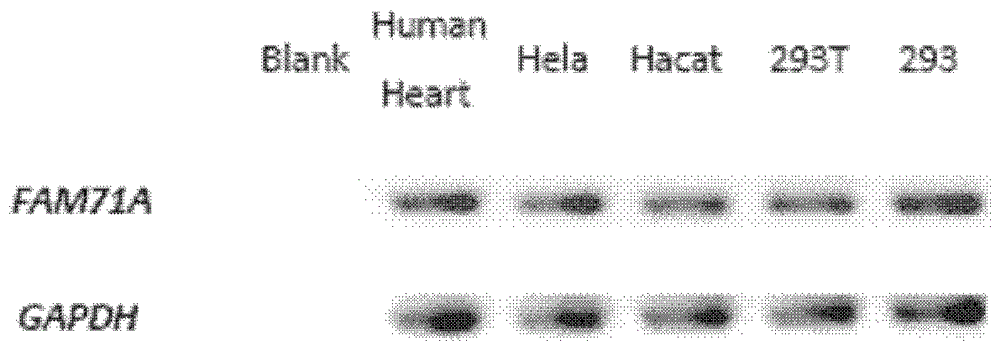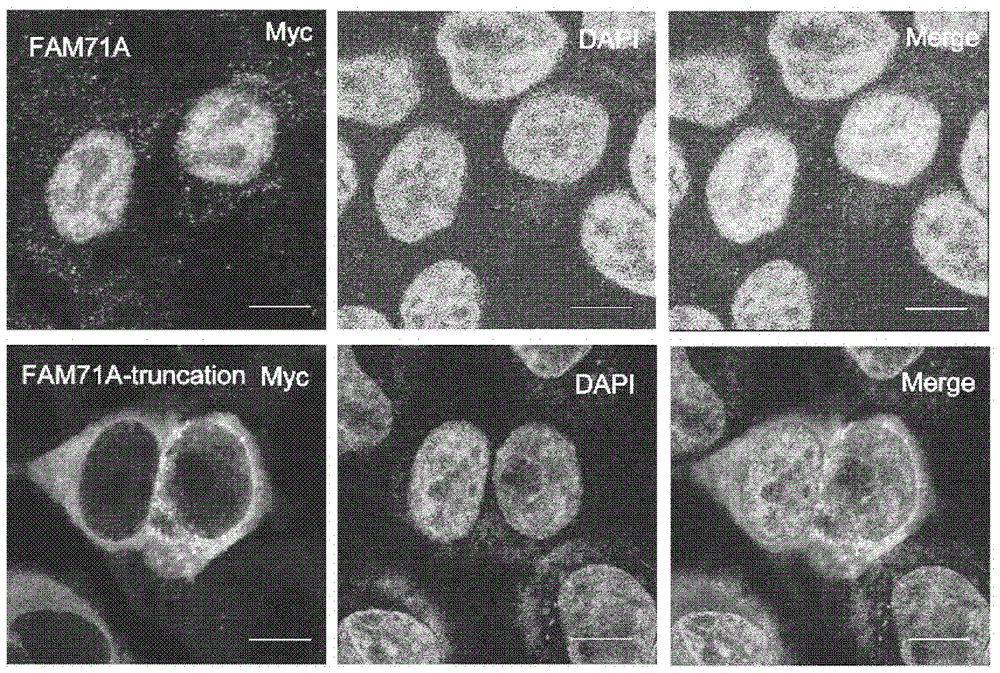Gene fam71a related to congenital heart disease and its application
A technology of FAM71A and congenital heart disease, applied in the fields of molecular biology and medicine, can solve the problems that the correlation between FAM71A gene and congenital heart disease has not been confirmed, and the correlation between FAM71A gene and congenital heart disease has not been confirmed.
- Summary
- Abstract
- Description
- Claims
- Application Information
AI Technical Summary
Problems solved by technology
Method used
Image
Examples
Embodiment 1
[0141] 1.1 Sample preparation
[0142] Blood samples from 217 patients with congenital heart disease were collected from tertiary hospitals in Hebei Province. All patients were diagnosed by experienced cardiologists, and the clinical phenotype was determined by standard echocardiography and other tests. Fully understand and collect patient clinical information and family medical history. Three of the 217 had Down syndrome and none of the other 214 had any syndrome. Most patients had undergone cardiac catheterization.
[0143] All patients or their guardians were fully informed and agreed to collect their blood samples for genetic research. This study was also approved by the Ethics Committee of the Institute of Health Sciences, Shanghai Institutes for Biological Sciences, Chinese Academy of Sciences.
[0144] The control samples (500 cases) were collected from normal people who were clinically determined not to suffer from congenital heart disease, and informed and agreed t...
Embodiment 2
[0184] Congenital Heart Disease Susceptibility Detection Kit
[0185] As described in Example 1, the mutations shown in Table 1 of SEQ ID NO: 1 are closely related to congenital heart diseases. Therefore, FAM71A gene-specific primers can be designed based on these mutations and detected by amplification using the patient's DNA as a template.
[0186] Prepare a test kit (100 person-times), which contains:
[0187]
[0188] A test group composed of 100 individuals was randomly selected, including subjects who were unknown whether they had congenital heart disease, patients who were known to have congenital heart disease, and normal people who had been tested without congenital heart disease.
[0189] Take 3ml of peripheral blood from the subject to be tested in the test group, and use conventional methods (or use a specific kit) to extract DNA from the blood. Dilute the PCR primers in the congenital heart disease detection kit to 2 μmol / μl, and use the extracted DNA as a te...
Embodiment 3
[0195] Auxiliary testing for congenital heart disease susceptibility
[0196] Prepare a test kit (300 person-times), which contains:
[0197]
[0198] Repeat the detection of Example 2, the difference is that 180 people's samples were randomly selected (whether they had congenital heart disease symptoms before the detection) for detection. Among them, some samples are blood samples (the preparation method is the same as in Example 1), and some samples are amniocentesis samples.
[0199] Preparation of amniotic fluid samples: Amniocentesis is used to collect amniotic fluid to obtain amniotic fluid cells for candidate gene mutation analysis. DNA is extracted from the amniotic fluid using conventional methods (or using specific kits).
[0200] The PCR primers in the congenital heart disease detection kit were diluted to 2 μmol / μl, and the DNA of each sample extracted was used as a template to carry out PCR reaction with the provided primers. After purification of PCR produc...
PUM
 Login to View More
Login to View More Abstract
Description
Claims
Application Information
 Login to View More
Login to View More - R&D
- Intellectual Property
- Life Sciences
- Materials
- Tech Scout
- Unparalleled Data Quality
- Higher Quality Content
- 60% Fewer Hallucinations
Browse by: Latest US Patents, China's latest patents, Technical Efficacy Thesaurus, Application Domain, Technology Topic, Popular Technical Reports.
© 2025 PatSnap. All rights reserved.Legal|Privacy policy|Modern Slavery Act Transparency Statement|Sitemap|About US| Contact US: help@patsnap.com



